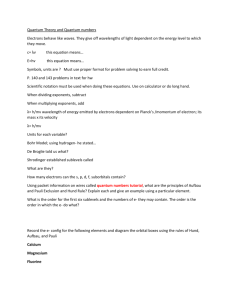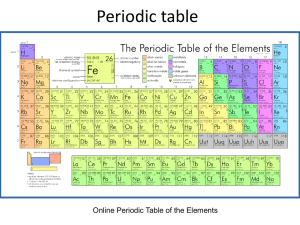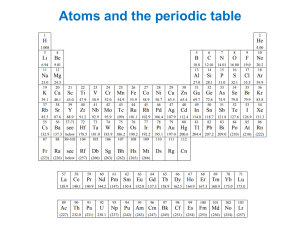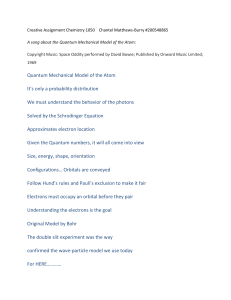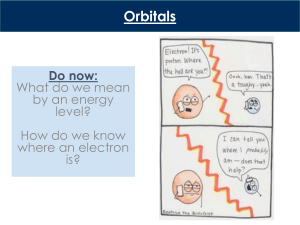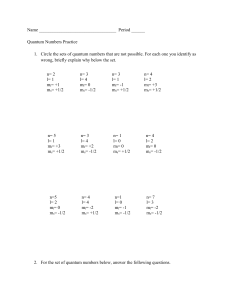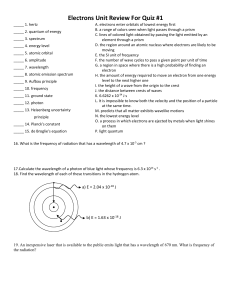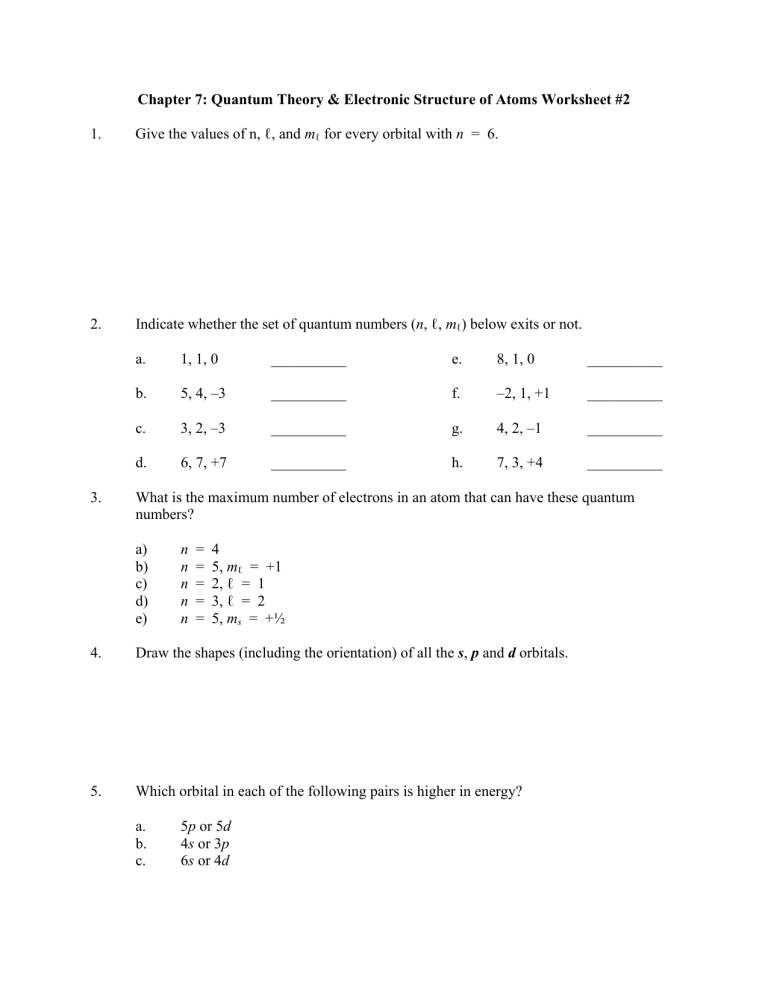
Chapter 7: Quantum Theory & Electronic Structure of Atoms Worksheet #2 1. Give the values of n, ℓ, and mℓ for every orbital with n = 6. 2. Indicate whether the set of quantum numbers (n, ℓ, mℓ) below exits or not. 3. a. 1, 1, 0 __________ e. 8, 1, 0 __________ b. 5, 4, –3 __________ f. –2, 1, +1 __________ c. 3, 2, –3 __________ g. 4, 2, –1 __________ d. 6, 7, +7 __________ h. 7, 3, +4 __________ What is the maximum number of electrons in an atom that can have these quantum numbers? a) b) c) d) e) n n n n n = = = = = 4 5, mℓ = +1 2, ℓ = 1 3, ℓ = 2 5, ms = +½ 4. Draw the shapes (including the orientation) of all the s, p and d orbitals. 5. Which orbital in each of the following pairs is higher in energy? a. b. c. 5p or 5d 4s or 3p 6s or 4d 7. What are the atomic number and the electron configuration of the yet undiscovered element directly below Fr in the periodic table? 8. Using the Aufbau principle, write the expected complete electron configurations (show the electrons as half-headed arrows in partially filled orbitals, following the Pauli exclusion principle and Hund’s rule) for each of the following atoms: a) S b) Fe c) N d) Cr e) Cu



